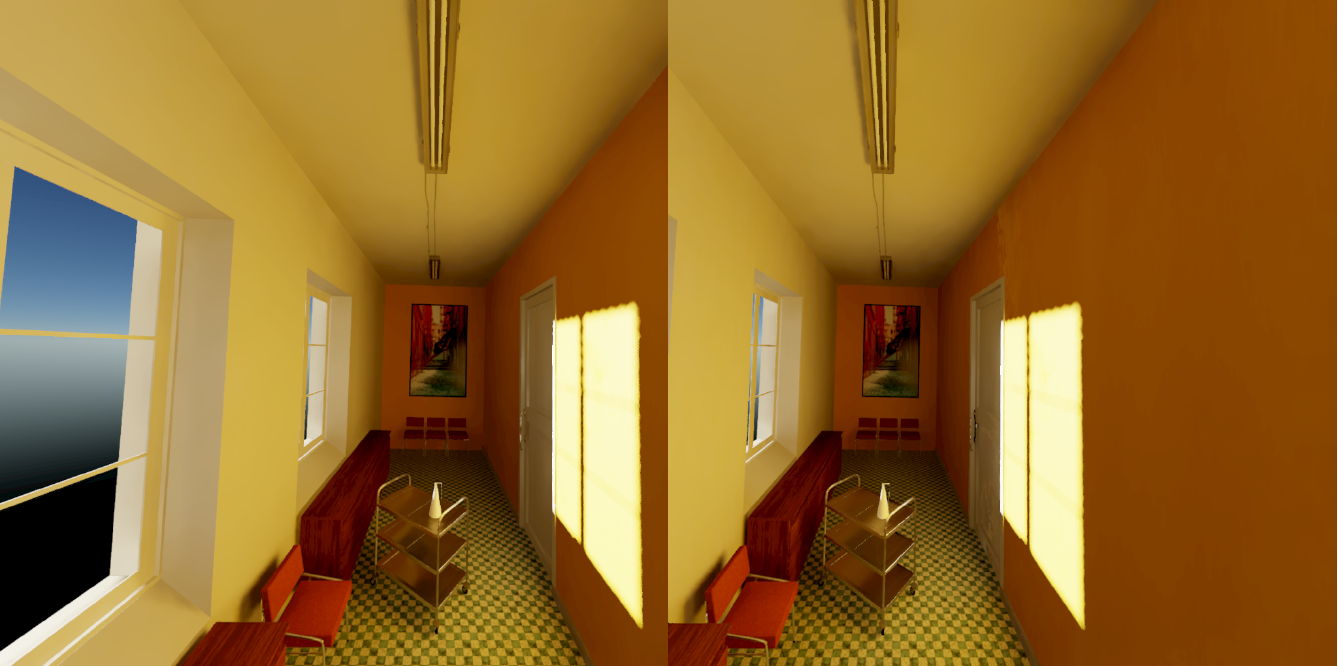Real-Time Edge-Powered VR Rendering
2024, Momeni Yazdi, E., Master of Science thesis, Tampere University.

Abstract: This thesis explores a novel system for enhancing Virtual Reality realism by leveraging the power of edge computing for path-traced rendering. Currently, the hardware limitations of standalone VR headsets make it impossible to render with high quality. That is why research has been done to explore offloading computationally demanding rendering tasks to remote servers.
However, this approach introduces significant challenges, particularly in streaming high-resolution VR content with minimal latency and bandwidth consumption. High latency can lead to motion sickness, and inefficient bandwidth usage can degrade the visual quality, posing obstacles to delivering seamless VR experiences.
Unlike existing proprietary solutions often tied to specific rendering engines, this project delivers a flexible, open-source framework. Our system is using OpenXR on the server, which provides broad renderer compatibility and can leverage multi-GPU setups for better performance. By embracing a Linux-based environment, we prioritize adaptability and flexibility. It also enables deployment on headless servers.
A critical aspect of our implementation is addressing the challenges of streaming VR content over networks. We focus on optimizing data transfer to ensure minimal motion-to-photon latency and efficient bandwidth usage. By carefully managing network protocols and utilizing existing compression techniques, we aim to deliver high-quality VR experiences without introducing excessive latency or bandwidth demands.
Crucially, our implementation demonstrates the feasibility of streaming photorealistic VR content with minimal latency and bandwidth consumption, enabling truly untethered and immersive VR experiences. By overcoming the inherent challenges of VR streaming, this work significantly advances high-fidelity, accessible virtual reality technology, enhancing user comfort and broadening accessibility by mitigating motion sickness concerns.